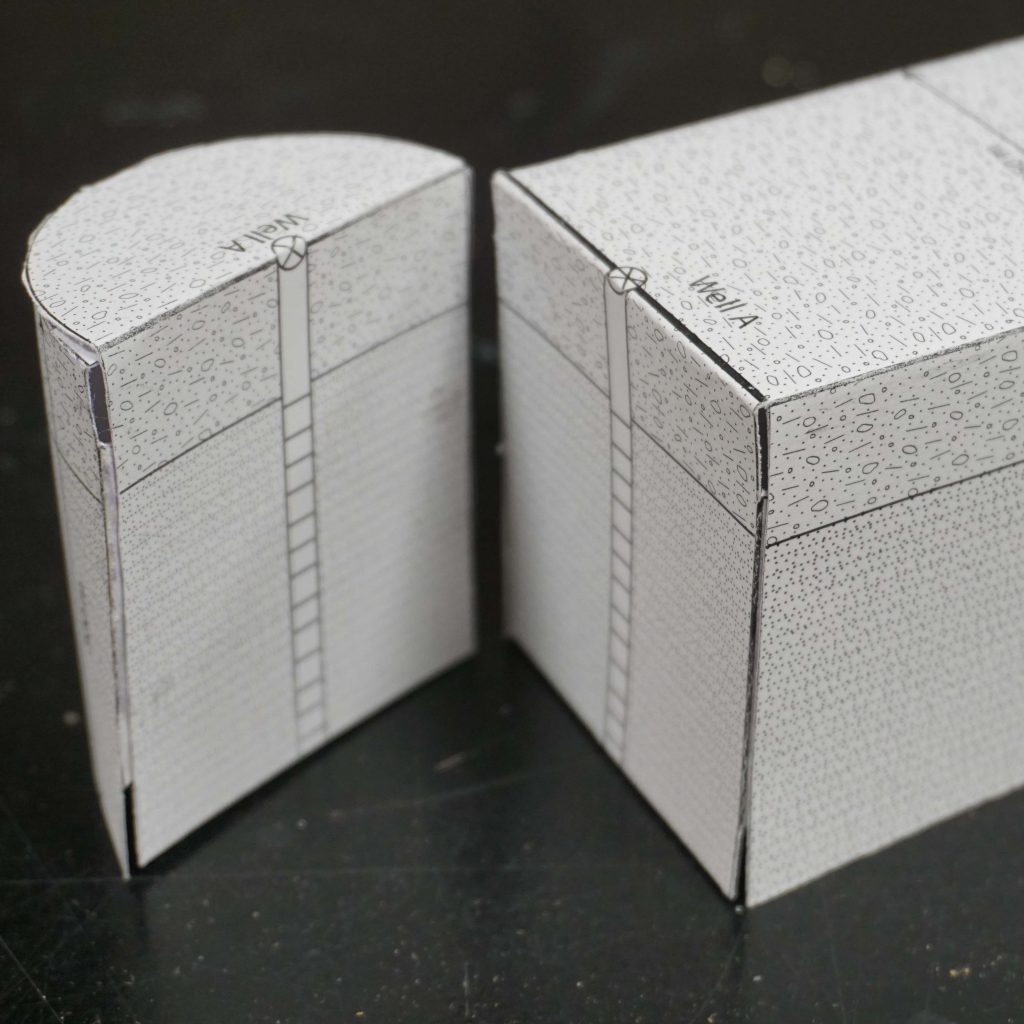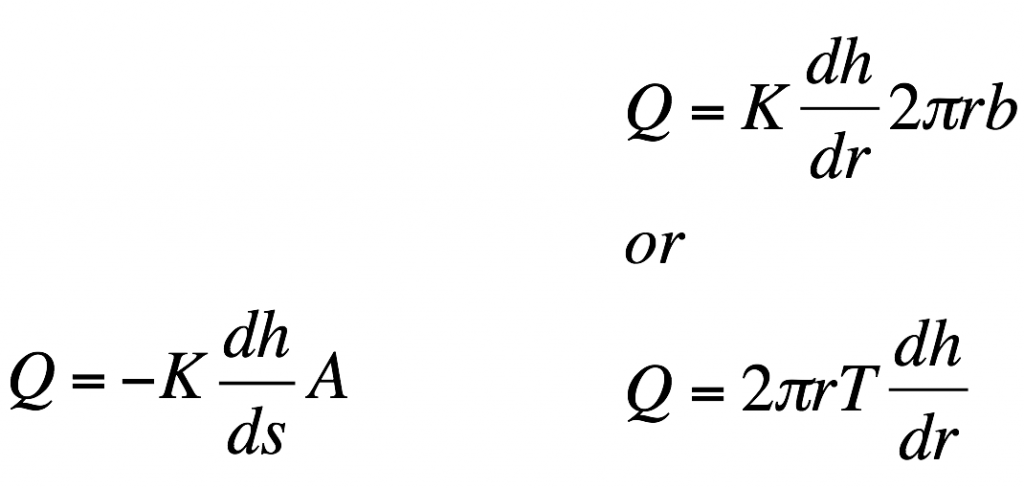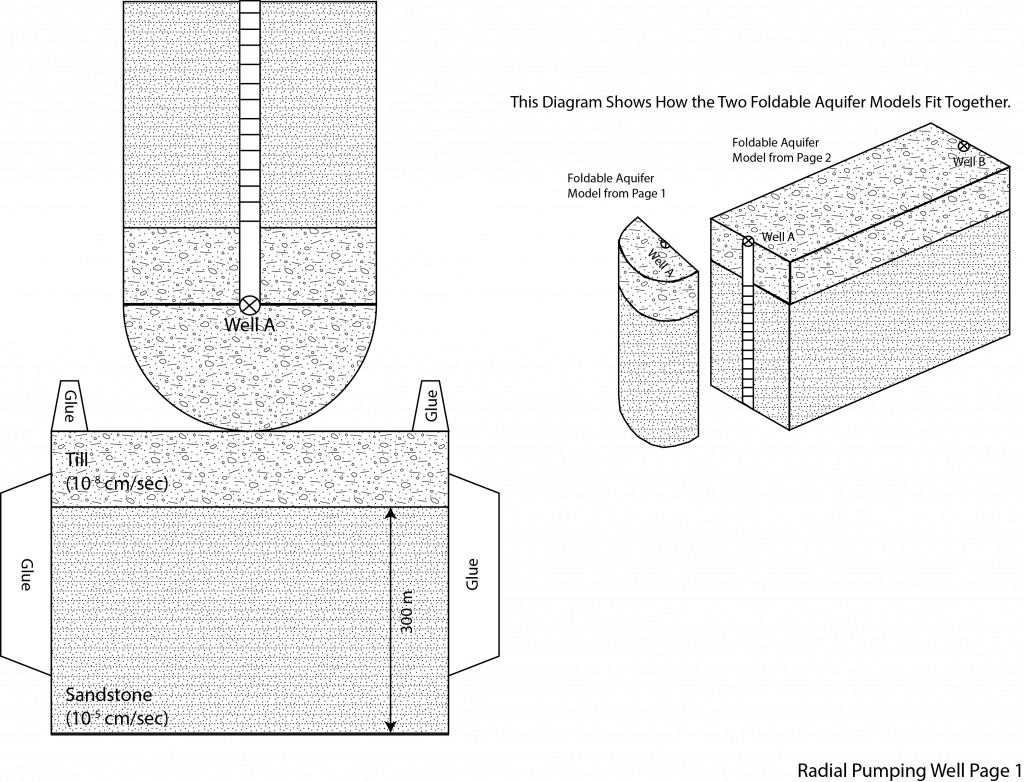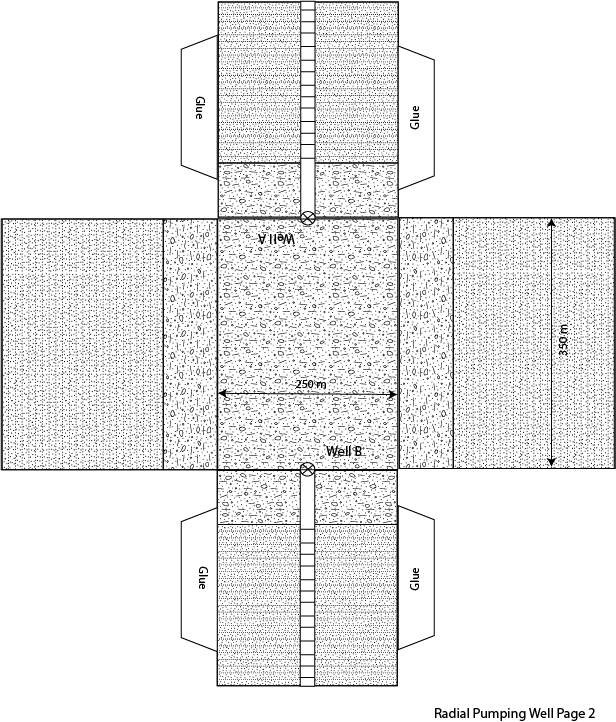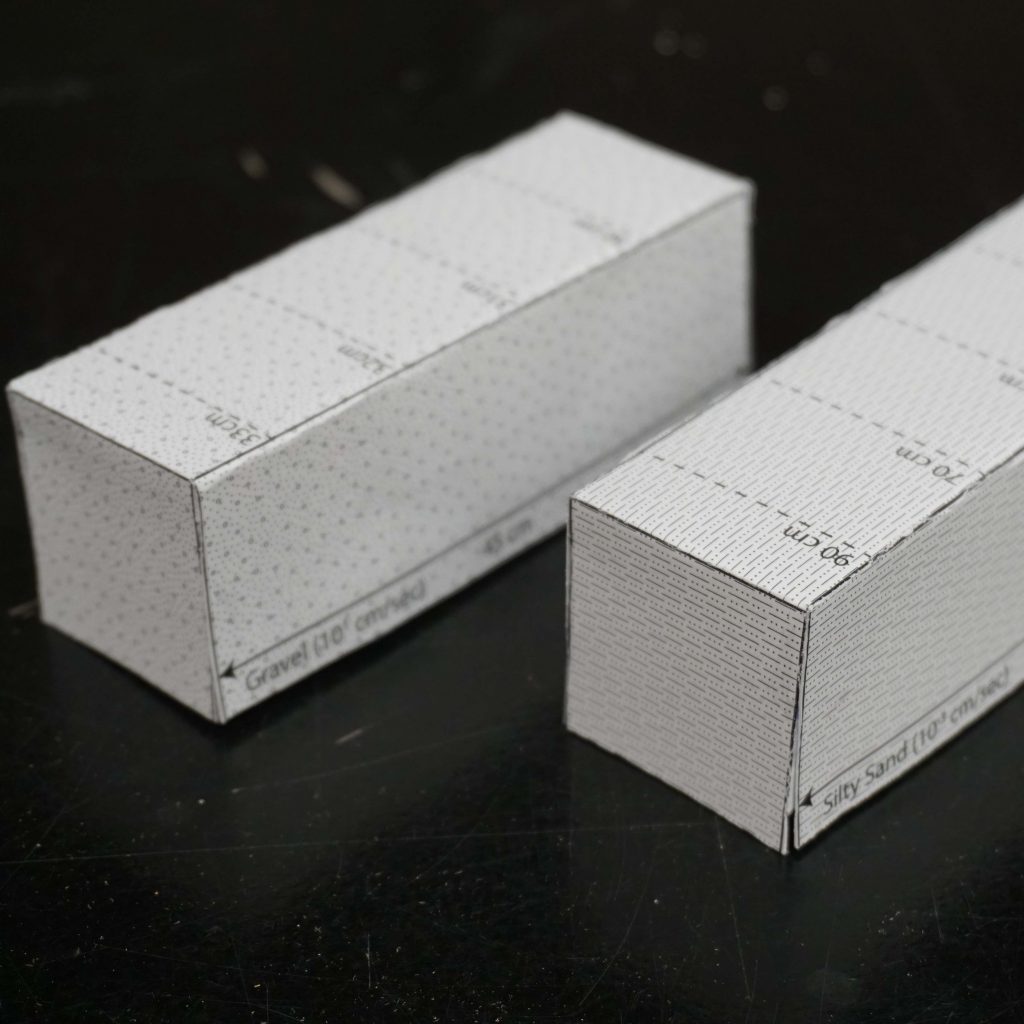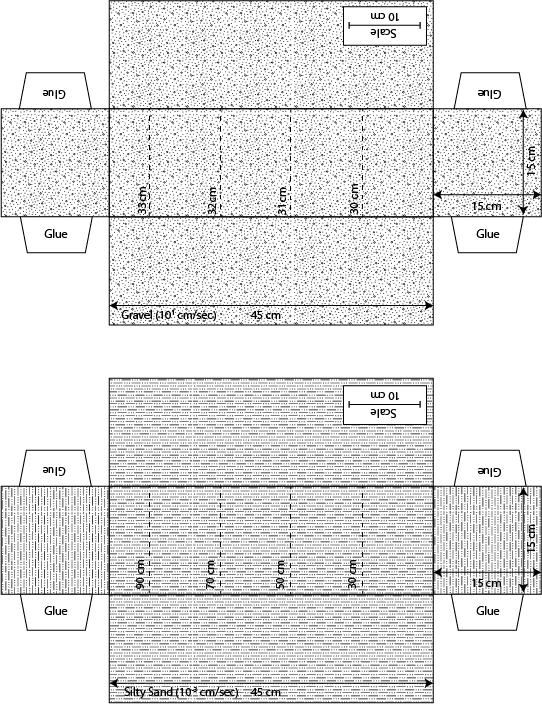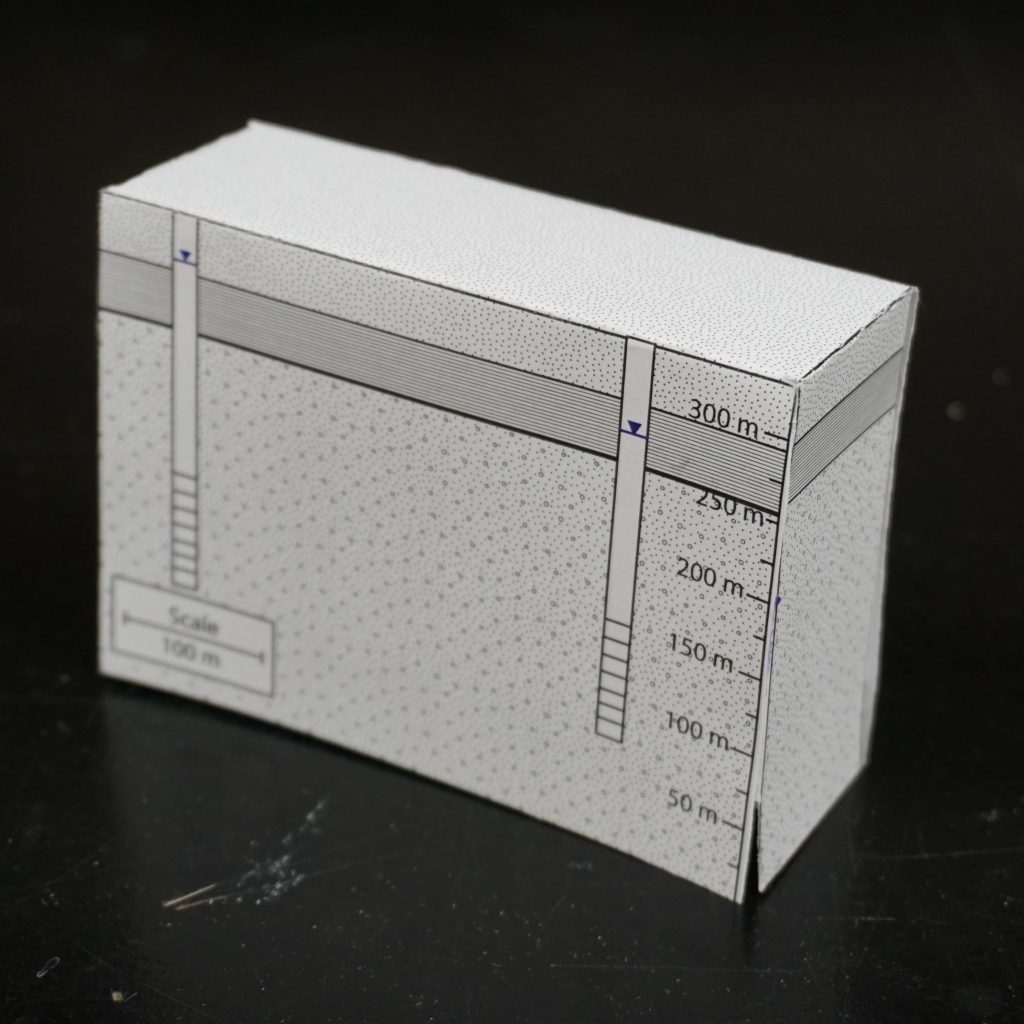
Objectives: Identify the direction of groundwater flow using wells and quantify groundwater discharge (Q) and travel times through a confined aquifer.
1. The following problem is based on confined gravel aquifer. In this case the confining unit is a low hydraulic conductivity shale, which acts as barrier to groundwater flow in the vertical direction. Within this aquifer there are two wells and the hydraulic head is shown as a solid line with a triangle on top. The hydraulic conductivity and effective porosity are labeled on the folable aquifer model along with the dimensions of the model. Please answer the following three questions.
A. Using the water levels in the two wells as your guide determine the direction of groundwater flow in the confined aquifer.
B. Quantify the groundwater discharge through the confined aquifer in units of m3/s and then convert this discharge into gallons per day.
C. Quantify the groundwater travel time between wells in units of days.


This work is licensed under a Creative Commons Attribution-NonCommercial 4.0 International License.

